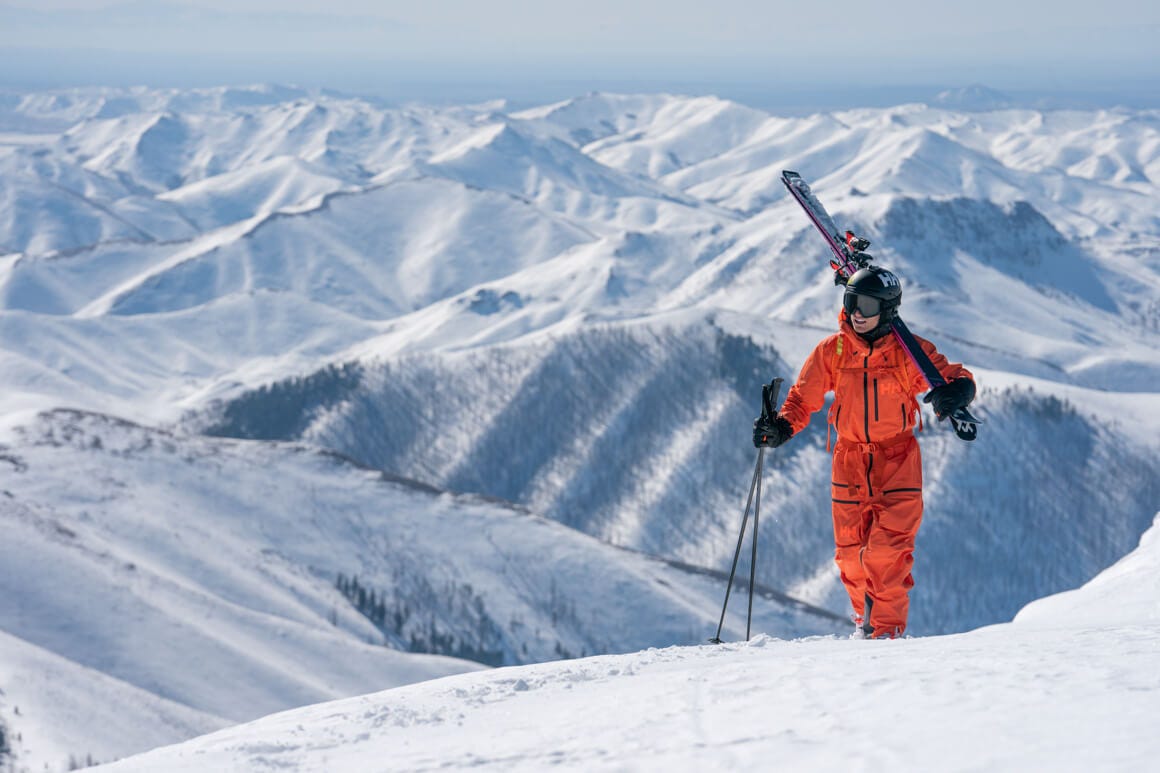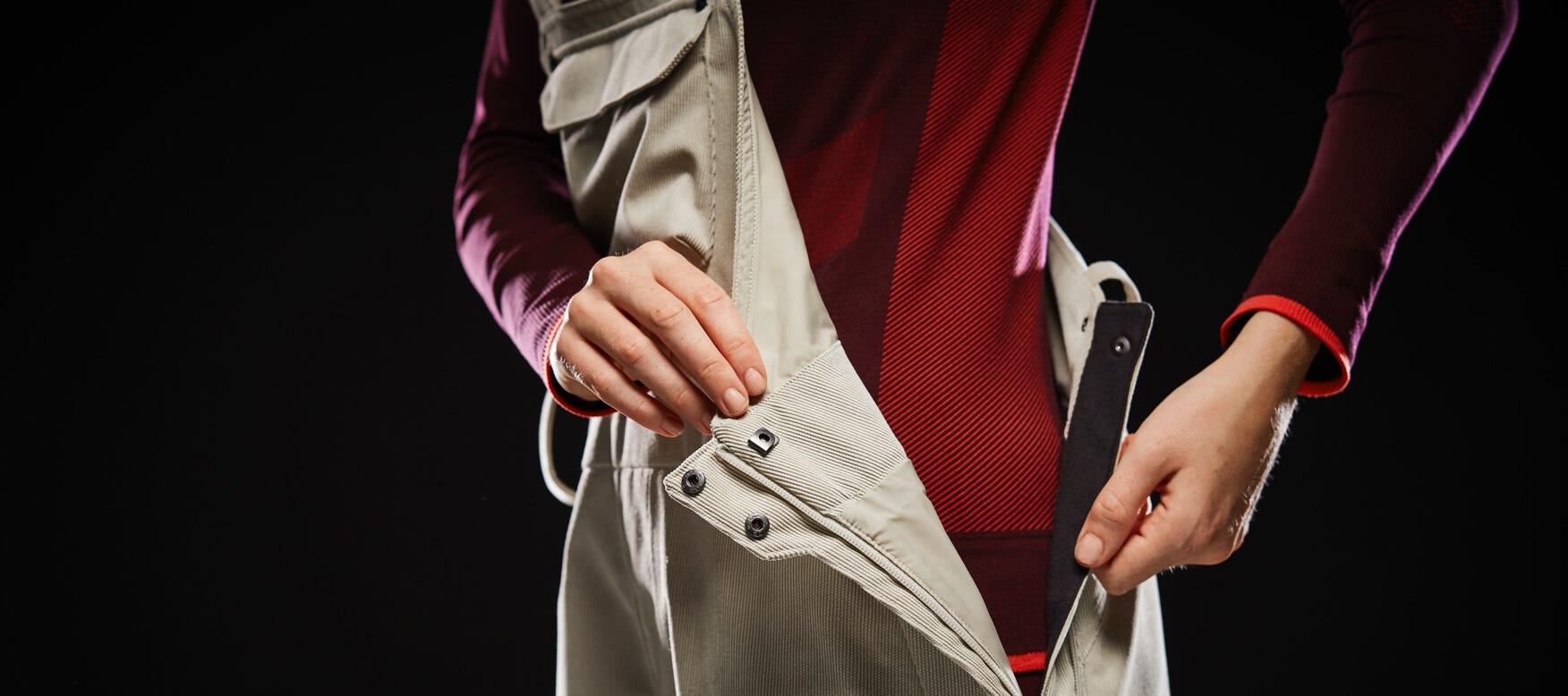Local Storage seems to be disabled in your browser.
For the best experience on our site, be sure to turn on Local Storage in your browser.
Choose your country
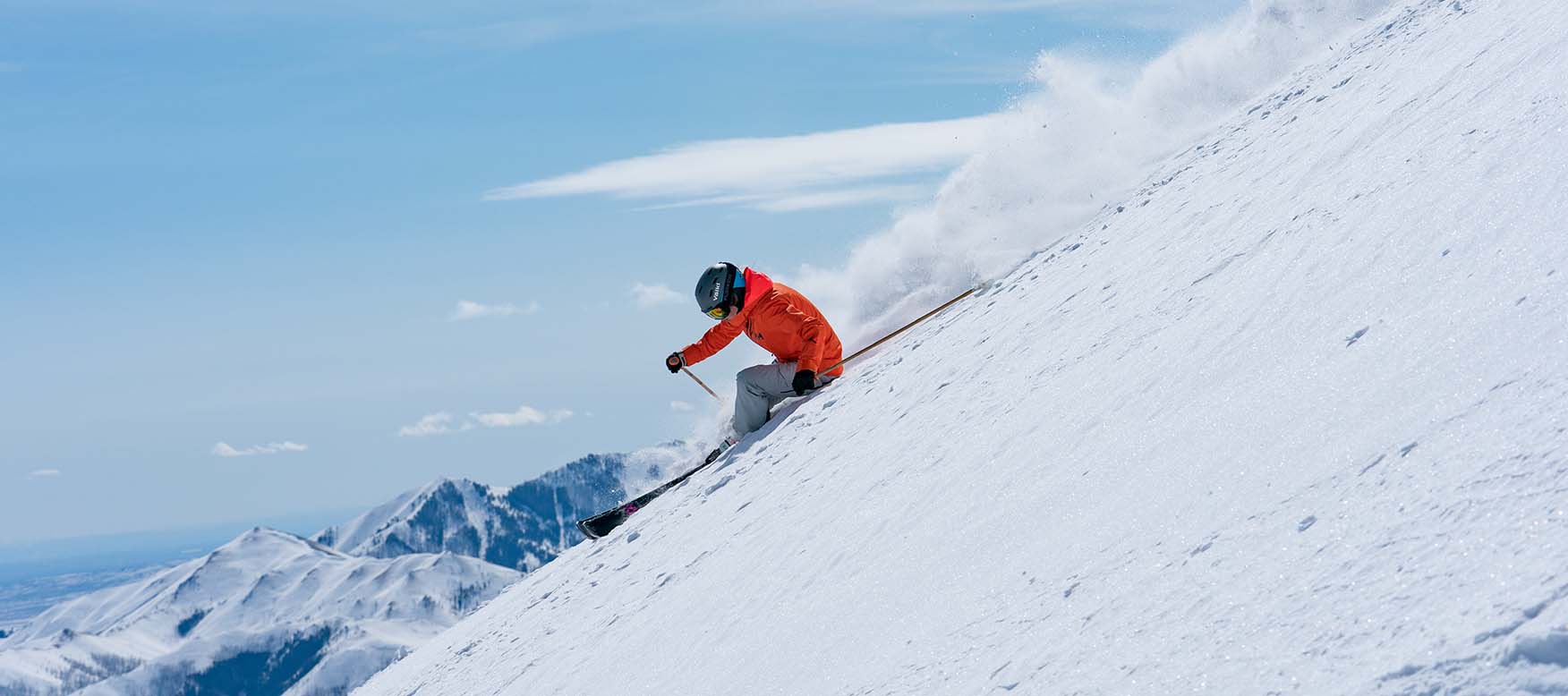
What to wear freeride skiing | ULLR
November 30, 2021
11 min read
From wide open bowls to untouched forest glades, skiing uncharted terrain requires specific gear. What features will allow you to focus on your turns and not on the clothes on your back?
Discover the features that are key for exploring big mountains in this guide by 2x Olympian and professional freeskier, Kaylin Richardson. Developed with professional skiers, the ULLR Freeride Collection offers gear for the hard-core powder lovers.
Durability
Freeride/big mountain skiing is a burlier, more adventurous endeavour than simple resort skiing. In one day I put my outerwear to the test looking for lines and working through terrain. This can include serious snags from tree branches, as well as rock exposure when things get really radical. I tend to create bigger angles and take bigger falls when I ski big mountain lines, so my edges may unwittingly come in contact with my pants (and jacket) as well.
Durable fabrics
The Maroi Shell from a few years ago was my most bomb-proof shell ever (closest FW21 jacket is Elevation Infinity Shell). The fabric almost had a military vibe and even though it showed moisture due to its cloth nature, it kept me dry. Where it shined though, was bush-whacking. I never gave a second thought to crawling through trees or climbing amidst rocks to access a line. I knew it would not rip, snag or catch. I have kept this shell for when I guide an especially hard-core group of college boys each year through the chutes and trees of Deer Valley and Alta/ Snowbird. They always want to explore and I am happy to lead the scraggly, snaggy way in that shell.
Maneuverability/Fit
I have to be able to move readily in my gear. Durability is super important, but mobility is crucial. There is that happy balance between baggy and snug, that is just perfect for performance. Design details allowing for a little more movement in the legs with a slight boot cut widening to access boot buckles make the difference between a good pant and a great pant.
Large sleeve openings / cuffs
Historically like on the Powderqueen and Aurora jackets, this is such a helpful design for big mountain skiing when you may need to be taking your gloves on and off regularly to access a pack, a GoPro, water, etc. Repositioning my glove inside a tight cuff (or however I like it) is such a time waster.
Relaxed fit
I like a relaxed fit as long as there is still a silhouette and more importantly, plenty of room to layer and move. I think Helly Hansen has done a great job with this—taking cues from current fashion while keeping mobility and performance paramount. For instance, there is room throughout the pant leg to move freely, but still a slight taper at the knee and boot cut at the cuff to give shape. I also love whenever the pants have a wider waist/ waistband area—it is flattering and more comfortable. With jackets a relaxed fit is definitely the way to go. A little cinch as the waist is okay, but it is not something I look for, plus if the cinch doesn’t hit my hips at the right place it can end up just making me look boxy. No woman, 5’10” or otherwise, wants to look boxy!
Big pockets
Big pockets are awesome, as are lots of pockets. On the days that I don’t wear a pack I love having different pockets for all my needs on different parts of my jacket and pants so that I am not all lumpy in just one spot. Staying organized with more pockets also allows me to keep track of my personal items. Storing a phone, wallet, handkerchief, chapstick, sunscreen, energy bar, small water bladder, and RFID pass in its own pocket is a lot, but with Helly Hansen’s generous pocket size and distribution, it is stowed all across my body.
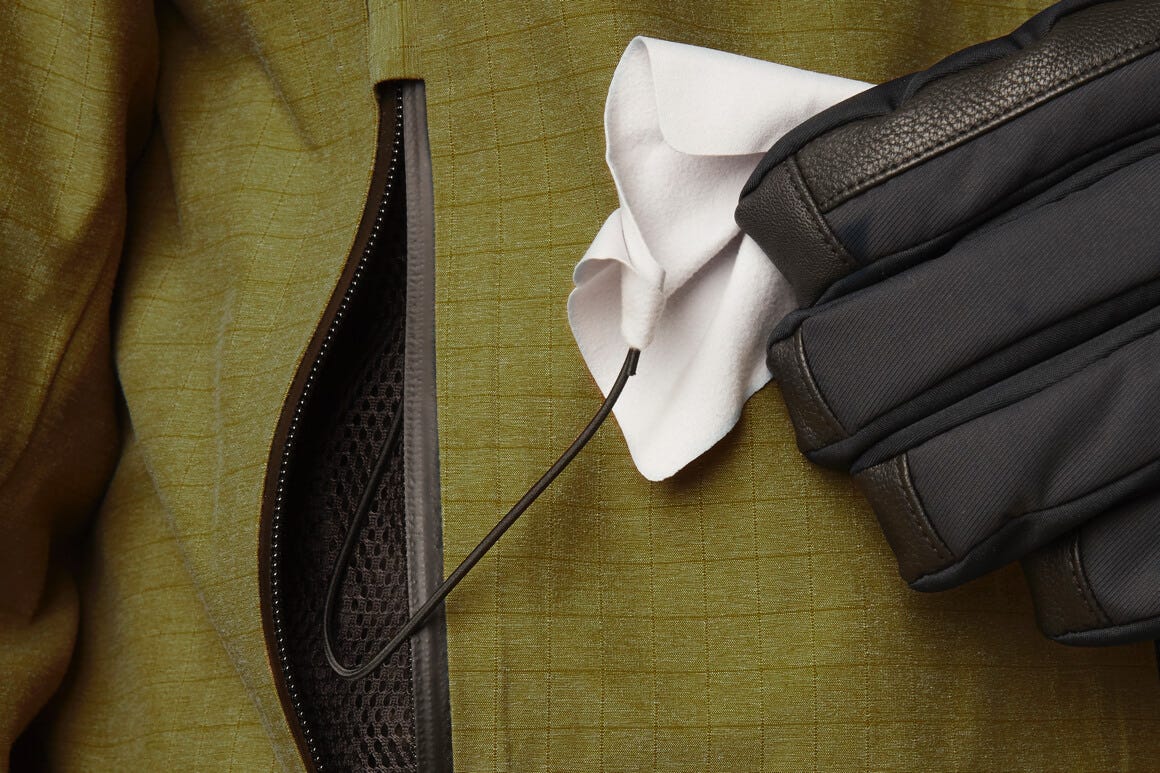
Comfort
Big mountain skiing often means big, long days in the mountains. Being comfortable allows me to focus my energy on my skiing. Dealing with being too hot or too cold or a base layer that is itchy, soggy or weak at the seams are all discomforts that distract me from the task at hand and don’t allow me to fully enjoy the present. I like every layer to be comfortable:
- A super soft LIFA® MERINO base layer that expels moisture while keeping me cozy.
- A midlayer that is low-volume, but effective in adding warmth.
- And an outwear setup that keeps the elements (wind, snow, sleet, rain) out, while allowing my excess body heat to escape when I need it to.
Read more: What to Wear Skiing
Insulation (or not)
That is tough. When I am guiding resort skiers, 98% of the time, heck yes! The super low volume, super warm insulators that Helly Hansen has created in the last two years are game changers. My Lifaloft Air Hooded Insulator is virtually light as a feather, yet performs like a down jacket. In the past layering can sometimes make me feel stodgy or tight, but now each piece is minimal fabric volume with maximum fabric technology - from the LIFA® MERINO base layer, to the LIFALOFT Air Insulator, to my Elevation Infinity Shell Jacket. On really cold days I can even double up on insulators, and add a vest, and STILL feel light and agile.
But when I venture into big mountain skiing I anticipate a lot of movement and athleticism, which will make me lean into a midlayer/shell setup. However, on really cold, storm skiing days, a smartly insulated ULLR Freeride jacket (the Powderqueen) has allowed me to perform and stay out far longer than a shell. I also notice an insulated jacket directly affects the warmth of my toes!?
Length (of jacket)
Being tall, I love a little extra length. There is that happy medium between too short for a backpack, and too long so that it falls in a weird place when you sit down. I err on a little too long than too short—I do NOT want it riding up so that my base layer is exposed when buckling boots. On the flipside, I am not wild about the jibber-style of jacket that falls mid-thigh because I feel I wouldn’t have the mobility I desire.
Wide collar
I love a wide collar, with a little bit of flexibility that I can zip all the way up on cold days. The key is a soft inner fabric that won’t chafe my nose or chin. Nestling into a cozy collar on a day of storm skiing is such a luxury!
ULLR collars are designed to block powder, so they’re super tall. Sometimes, it’s a little too much and I don’t like having my entire face covered, but I’ve learned how to make it work for its purpose, and I appreciate blocking the blowing snow from my face.
Adaptability
This goes hand and hand with comfort. I measure this mostly by the breathability of my gear. A waterproof shell that is ALSO breathable, is a rare gem when it comes to big mountain skiing. I have had countless days in the mountains that started out sunny, but then turned to stormy, and back to sunny. My Elevation 2.0 Shell adapted perfectly, regardless of my effort. When it gets really hot I can also open up the vents and really cool off. It was amazing how I didn’t overheat, which helped me stay warm (aka dry because no sweat!) when the weather changed over and over again.
H2Flow™️ / Ventilation
Sweating is the greatest culprit to serious cold and discomfort when skiing. Staying dry is key, and ventilation is a critical part of that. The harder I work, the more I appreciate the H2Flow™️/ ventilation of jackets. I remember my very first piece with H2Flow™️ — I think it was the first iteration of the Powderqueen Infinity Jacket, and it was a game changer. Using my own body heat as insulation is genius. It weighs nothing and allows me to regulate so quickly. When I am hot I open up my vents/zippers and it’s like instant AC. And when I need to warm up, I just zip up and allow my body heat to do the work. It is so efficient and simple. I never used to like to ski hard in insulated jackets (even lightly insulated) because I would sweat, but now with H2Flow™️ I can enjoy the benefits of insulation, especially on those bitter Jan/Feb days without worrying I might overheat and sweat.
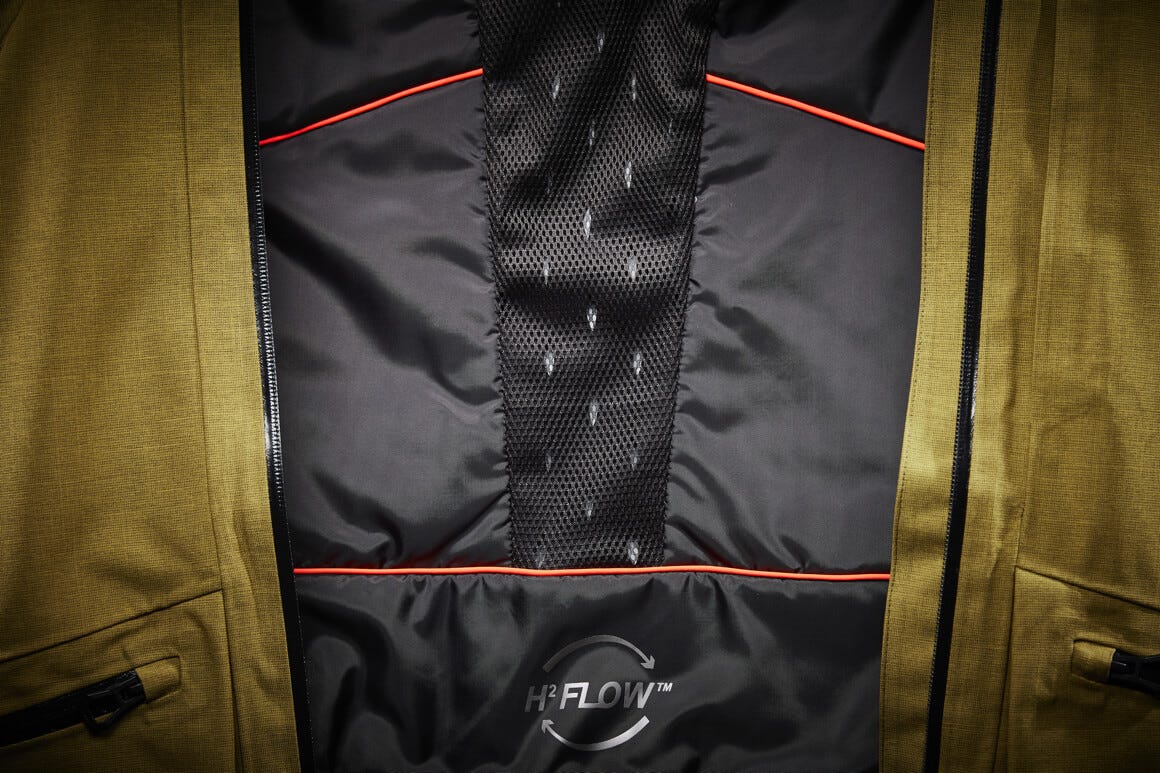
Bib pants or not: drop seat, etc.
I love bib pants—for different reasons on different ski days. On big mountain days where there is hopefully powder, I feel like they give me a little more protection and warmth than pants without being a onesie. When it comes to big mountain days that require a little hiking or backcountry action, bibs are awesome for touring—a little added warmth through my core without a midlayer, which allows me to easily shed my shell/jacket for a quick hike.
I am all about the drop seat because Helly Hansen does a phenomenal job aligning it with the design aesthetic. I think few people even realize it’s a drop seat because of the fun/poppy zipper detailing and/or seam design. I loved my W Elevation Infinity Shell Bib from a few years ago. The drop seat came from the side-zippers effortlessly and gave a lot of access if/when I needed to utilize it.
A few friends checked out my more hybrid bib in the Odin line that was the stretchy softshell material that comes to a “V” at the waist. They loved the material, but felt it highlighted their less-than-perfect belly. I realize the Odin line is about low-volume, high-performing fabrics/designs for the backcountry, but thought I would mention this in case that design might be integrated into resort.
Lastly, I love bibs, but it can be tough as a 5’10” woman sometimes because I can only lengthen the straps, and sag them so much before the bib looks weird and low, but I also want the pant to be long enough to look good. I sometimes have to forgo bibs or onesies because the pants are just too short. Not a huge deal, just something that might deter other taller bib-loving women. Really petite women are used to getting ski gear tailored, average height women kind of vary, but I know tall women are very cognizant about their ski pants being long enough.
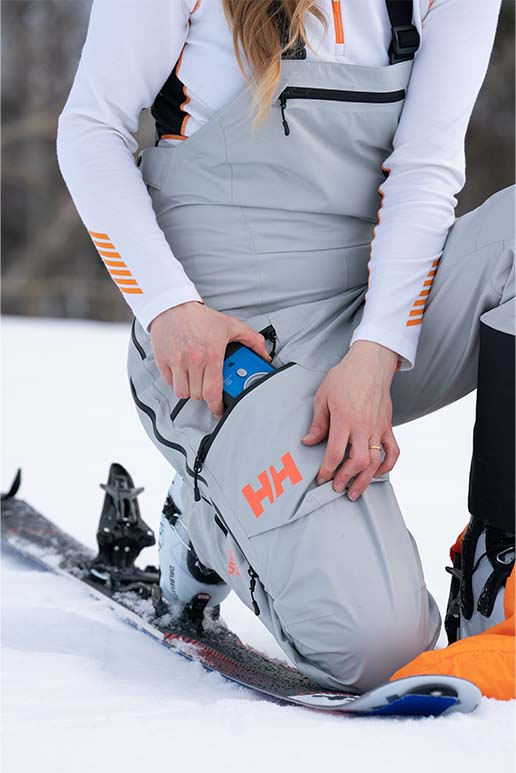
safety
Hi vis details
It is fun to look cool and have popping colors, but there is a utility to the hi vis accents on big mountain gear. On stormy days it gives me confidence that my partners can spot me, and that I can easily keep a gauge on them as well if we separate a bit to grab different lines. Visibility is a safety issue, but who doesn’t want to wear something that gets them noticed when they’re ripping? It is so cool to see flashes of neon between the trees when I’m skiing down behind a buddy.
Also, huge kudos to Helly Hansen for cornering the market on the neon high-vis detailing on virtually all of their jackets—people recognize Helly Hansen from afar due to this without ever spying an “HH” logo. And people also recognize me! Countless times people say hello in the chairlift line, once they realize it’s me because of two things:
- Hi vis details cue them into an Helly Hansen wearing skier (me).
- My long, blond ponytail.
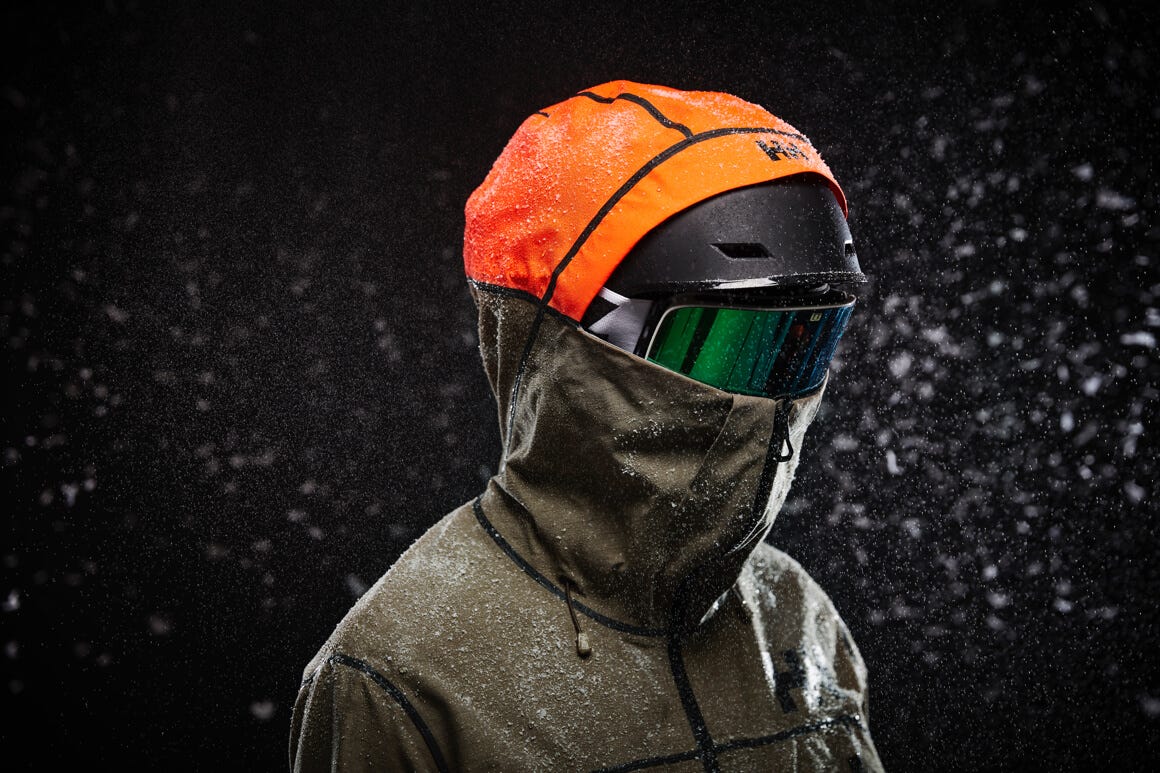
Internal pocket for goggles
Yes, yes, yes! For any elite skier with aspirations to conquer big mountains, the internal goggle pocket is a must. Not to necessarily stow extra goggles, but to defog/warm up your goggles. My internal goggle pocket has saved the day countless times when the inner lens of my goggles has frozen or fogged up. I just pop them in the inner pocket and let my body heat do the work.
Cargo pocket
People have opinions about cargo pockets on pants, I for one, love them—whether I am on the chairlift, in between lines, or wearing a backpack, they are always the easiest pocket to access. When big mountain skiing leans into backcountry touring, having an insulated cargo pocket designed for a beacon on my pants has been such a welcome addition. Beacons are made to be in the bitter cold, but knowing it has a little extra protection is comforting. Plus, the added zipper security is appreciated.
Life Pocket™️
The LIFE POCKET™️ is a game changer! Knowing that my phone is retaining a longer charge gives me more confidence as I attempt big mountain objectives that are farther out. My phone could be a lifeline and I need to protect that battery power the best I can. Plus, of course it is nice to relax, knowing I have more battery for chronicling the adventure with pics and videos!
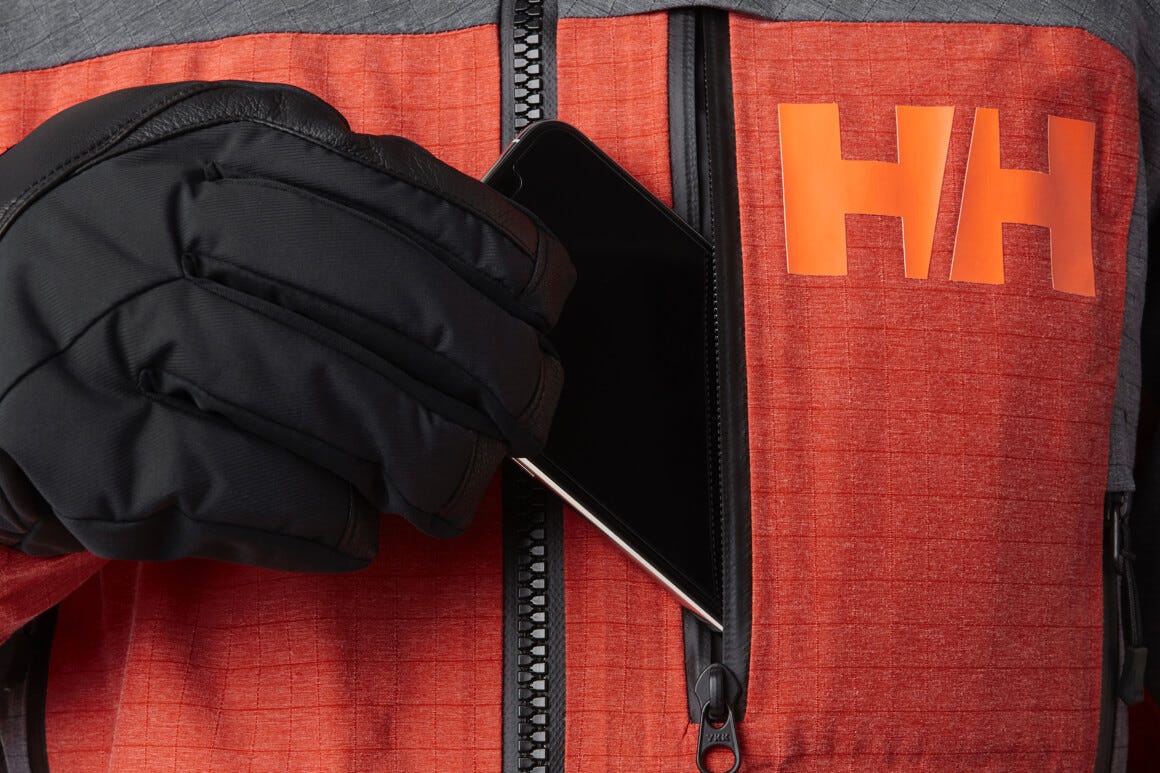
RECCO® Technology
When I am in avalanche terrain I will always have my beacon on me, so RECCO® isn’t much of a priority, though it’s a cool feature. I’ve had recreational friends that have bought their kids jackets precisely because they have RECCO®, because it eased their mind.
Optional features
Powder skirt
I don’t believe I’ve ever used my powder skirt, not once. This is likely because I don’t fall too often (famous last words). I think other skiers might like it, but I always felt it was just extra bulk around my middle that I didn’t want. I would zip it off if I could or even cut it out sometimes. Even when it interfaced with pants to create a really great system of protection, it never quite worked for me, or was worth the time to snap them together. That is totally just me though!
Ski pass pocket
As RFID has taken over, I really like this feature and I think it is worth integrating a slim, single-purpose pocket into the end of the sleeve of most jackets. Just makes it easy, especially because RFID cards are so sensitive to credit card/cell phone interference- I can put my ticket in once and not have to touch it again- maybe the entire season!
Wrist gaiters/thumb hole
A loose wrist gaiter is really nice, to keep the cold and snow out, especially with the large cuff/ sleeve opening I like. I don’t really use the thumb hole at all, but it doesn’t bother me. I guess if it is a multi-season shell the thumb hole might be an appreciated addition for hiking and/or trail running during the other seasons?
Big hood
A big hood is great, and I think all jackets should have them, but I rarely ski with a hood on. For me, it’s mostly there for me to bundle up in while waiting for weather to break. I always wear a gaiter/ neckie so the hood was never a super important element for warmth while actively skiing. If the hood was bigger to fit over the helmet I might ski with it up more, but probably not.
There is also a tradeoff—I don’t want a super big hood trailing or flapping behind me. In the past there have been cinches, but I wouldn’t add a lot of hardware or complicated design to the hood since, although I think it is an important element and design aesthetic, I don’t think it’s used by most skiers all that often.
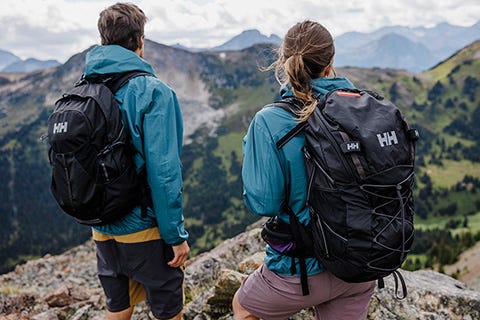
June 03, 2024 3 min read
How to choose the right backpack for your adventure
Ever wondered how much you can fit in your backpack? Whether you're planning a day hike or a multi-day expedition, choosing the right size is crucial. Learn about the different pack capacities, types and key features to look for.
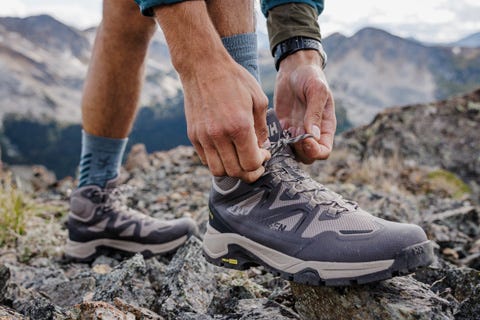
May 15, 2024 3 min read
How to Choose Hiking Footwear
The best hiking shoes or boots should be comfortable to wear. Follow our expert tips to learn how to choose the right hiking footwear for you.
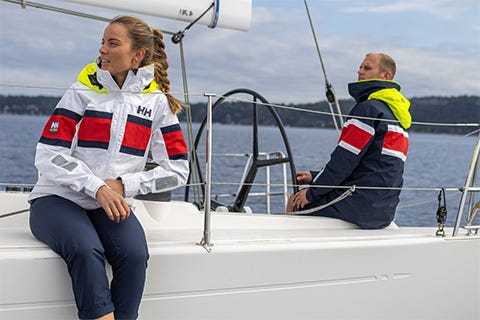
April 30, 2024 3 min read
What to wear Coastal Sailing
To dress for coastal sailing, you want to be protected against the wind and spray from the waves, and also the sun. In this guide, we share some top tips for layering from professional sailors, Kayleen VanderRee and Pip Hare.
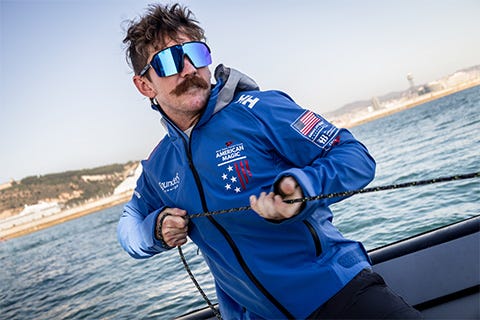
April 30, 2024 2 min read
What to Wear Inshore Sailing
Inshore sailing requires quick-dry materials and lightweight jackets. In this guide we share some top tips on what to wear from seasoned sailor, Mauro Melandri.

